7 Days Crash Course In Geography For National Defence Academy (NDA) Exam- Part I
National Defence Academy (NDA) Exam 2021-22 is scheduled on 14th November. This year girls can also take the National Defence Academy (NDA) Exam. It is a National-level exam conducted twice a year by UPSC. The exam is conducted to recruit candidates in the Army, Navy, and Air Force. It is a two-tier entrance examination, after qualifying for the written test candidates will also have to clear the SSB interview round.
About National Defence Academy (NDA)
National Defence Academy (NDA) lays emphasis on character building, mental and physical robustness, leadership and keen observation for leading the troops on the battlefield. Selected candidates have to go through rigorous training for 3 years. Highly lucrative and prestigious job.
Achieve The Best Results In Geography Questions For National Defence Academy (NDA) Exam
Topic: The Earth – It’s Shape and Size
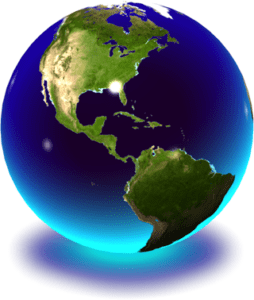
The Earth – It’s Shape and Size for NDA
1. Earth rotates around it’s axis in ________ Direction.
A: North to South
B: South to North
C: East to West
D: West to East
2. Angle of inclination of Earth’s Axis to its orbital plane is __________?
A: 66½ degree
B: 66¾ Degree
C: 23½ degree
D: 90 degree
3. Vernal Equinox is –
A: June 21st
B: March 21st
C: September 23rd
D: 22 December
4. Summer Solstice is on ________________
A: 21st September
B: 23 March
C: 21 December
D: June 21st
Hint: The day that the Earth’s North Pole is tilted closest to the sun is called the summer solstice.
5. What is the shape of Earth?
A: Flat
B: Circle
C: Square
D: Sphere
6. What is the average radius of Earth?
A: 8000 Km
B: 5000 Km
C: 6400 Km
D: 4600 Km
7. Correct sequence of Earth from interior to surface is __________
A: Core > Crust > Mantle
B: Core > Mantle >Crust
C: Crust > Mantle > Core
D: Mantle > Core > Curst
For more and better clarity read What exactly is the shape of our earth ?
https://www.thoughtco.com/geodesy-size-shape-of-planet-earth-1435325
7 Days Crash Course In Geography For National Defence Academy (NDA) Exam
Topic: Atmosphere and it’s composition, Humidity, Condensation and Precipitation
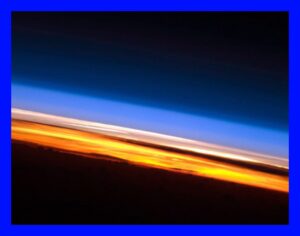
Atmosphere and it’s composition for NDA Exam
1. Who amongst the following was the first to state that the earth was spherical?
(A) Aristotle
(B) Copernicus
(C) Ptolemy
(D) Strabo
2. Which one of the following stars is nearest to the Earth?
(A) Polaris
(B) Alpha Centauri
(C) Sun
(D) Mercury
3. Which one of the following layers of the atmosphere is responsible for the deflection of radio waves?
(A) Troposphere
(B) Stratosphere
(C) Mesosphere
(D) Ionosphere
4. Which one of the following is the correct sequence of different layers of the atmosphere from the surface of the Earth?
(A) Troposphere, Stratosphere, Ionosphere, Mesosphere
(B) Stratosphere, Troposphere, Ionosphere, Mesosphere
(C) Troposphere, Stratosphere, Mesosphere, Ionosphere
(D) Stratosphere, Troposphere, Mesosphere, Ionosphere
5. Volcanic eruptions do not occur in
(A) Baltic Sea
(B) Black Sea
(C) Arabian Sea
(D) Caspian Sea
6. The earth’s rotation does not cause
(A) deflection of ocean currents
(B) phases of the moon
(C) tides
(D) difference in time between two meridians
7. In aeroplanes, the atmospheric pressure is measured with
(A) Aneroid Barometer
(B) Barometer
(C) Wind vane
(D) Altimeter
8. All of the following types of climate occur in the southern hemisphere except _______________ .
(A) hot desert
(B) savannah
(C) equatorial
(D) tundra
9. The layer of the atmosphere which contains dust particles and water vapor is called
(A) Stratosphere
(B) Troposphere
(C) Exosphere
(D) Mesosphere
10. Farrell’s Law is concerned with the _________________
(A) direction of winds
(B) velocity of winds
(C) intensity of waves
(D) None of these
11. The jet aircrafts fly very easily and smoothly in the lower stratosphere. What could be the appropriate explanation?
(1)There are no clouds or water vapour in the lower stratosphere.
(2) There are no vertical winds in the lower stratosphere.
Which of the statements given above is/are correct in this context?
Options:
A. 1 Only
B. 2 Only
C. Both 1 and 2
D. Neither 1 Nor 2
You may read LAYERS OF ATMOSPHERE for better understanding of the topic.
7 Days Crash Course In Geography For National Defence Academy (NDA) Exam
Topic: Latitudes and Longitudes
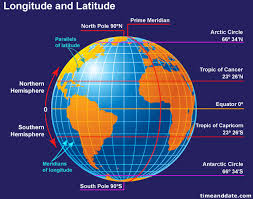
Latitudes and Longitudes on Globe
1 Days and nights are equal throughout the globe when the sun is above _______________
A. Equator
B. Poles
C. Tropic of Cancer
D. Greenwich
2. Which of the following latitude forms a great circle?
A. Prime Meridian
B. Arctic Circle
C. Equator
D. International Date Line
3. Which of the following is the farthest from the center of the earth?
A. Equator
B. Antarctic Circle
C. North Pole
D. Greenland
4. If the difference in time between two places were 2 hours and 40 minutes, then the difference in their longitude would be:
A. 20
B. 25
C. 30
D. 40
Learn How to calculate time using longitudes explained Step by step
5. The only Longitude which is not a semi circle is ________________
A. 0 Degree
B. 90 Degree
C. 180 Degree
D. 66.5 Degree
International Date Line – why it is not straight?
5. When ship crosses International Date-line from west to east:
A. It loses one day
B. It gains one day
C. It loses half day
D. It gains half day
6. The concept of time on earth is due to _________________
A. Rotation of Earth
B. Revolution of Earth
C. Rotation of Moon
D. Both A and B
7. Greenwich Mean Time (GMT) is the standard time of which of the following countries?
A. Japan
B. UK
C. France
D. India
8. One degree of longitude on the equator is equal to a distance of _____________ miles.
A. 4
B. 34.5
C. 52
D. 69
9. Which of the following statements is correct?
A. Both Latitudes and Longitudes pass through poles.
B. Both Latitudes and Longitudes run parallel to equator
C. Both Latitudes and Longitudes run perpendicular to each other.
D. Both Latitudes and Longitudes are equidistant.
10. What is the longitude of a town if its local time is 6 pm when Greenwich time is 4:00 pm?
A. 20
B. 30
C. 40
D. 60
Syllabus Of Geography for National Defence Academy (NDA) Exam
The earth, it’s shape and size, Atmosphere and it’s composition. Latitudes and Longitudes, Temperature and Atmospheric Pressure, Planetary winds, Cyclones and Anti-cyclones, Humidity, Condensation and Precipitation, Ocean currents, and tides,
Concept of time, types of climate, International Date Line, Major Natural regions of the world, Movements of earth and their effects, Regional Geography of India, Natural vegetation.
Mineral and Power Resources, Location and Distribution of Agricultural and Industrial activities, Origin of earth, Rocks and their classification, Important Sea Ports and Land, Sea and Air routes of India, Weathering – Mechanical and Chemical, Earthquakes and Volcanoes, Main Items of Import and Export of India.
Topic: Latitudes and Longitudes
11. The local time of a place is known with reference to its ______________?
A. Distance from the capital city.
B. Latitudinal position
C. Longitudinal position
D. Distance from the equator.
12. Which of the following latitude is the smallest circle?
A. 0 Degree Equator
B. 23.5 Degree Tropic of cancer
C. 66.5 Degree Antarctic circle
D. 80 Degree latitude
13. Distance between two degrees of latitude is ___________ km on earth.
A. 101
B. 111
C. 121
D. 131
What are lines of latitudes and longitudes on Globe?
14. Two degrees of latitudes and longitudes are further divided into ____________ minutes.
A. 15
B. 30
C. 45
D. 60
15. International Date Line passes through _______________ ocean.
A. Atlantic
B. Indian
C. Pacific
D. None of these.
For more information on Latitudes and Longitudes in Hindi and English, click on the given link.
What are lines of latitudes and longitudes on Globe?
How to calculate time using longitudes explained Step by step
International Date Line – why it is not straight?
7 Days Crash Course In Geography For National Defence Academy (NDA) Exam
Topic: Temperature and Atmospheric Pressure
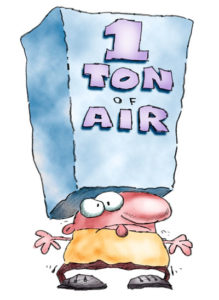
Temperature and Atmospheric Pressure
1. What is the force exerted on the surface by the column of air above it called?
A. Pressure
B. Stress
C. Wind
D. Force
2. Which instrument is used to measure the atmospheric pressure?
A. Anemometer
B. Barometer
C. Wind Vane
D. Hygrometer
3. Which is the correct statement about atmospheric pressure. Select the correct code from the options given below:
- The atmospheric pressure increases with height
- It is measured by means of an instrument called barometer
Options:
A. 1 Only
B. 2 Only
C. Both 1 and 2
D. Neither 1 Nor 2
4. Which among the following statements is/are correct about atmospheric pressure? Select the correct code from the options given below:
- A rising pressure indicates fine and settled weather.
- A falling pressure indicates unstable and cloudy weather.
Options:
A. 1 Only
B. 2 Only
C. Both 1 and 2
D. Neither 1 Nor 2
5. Which among the following statements is/are correct about Humidity? Select the correct code from the options given below:
- It is defined as amount of water vapor present in air
- The capacity of air to absorb water vapor decreases with increase in temperature
Options:
A. 1 Only
B. 2 Only
C. Both 1 and 2
D. Neither 1 Nor 2
6. What is the weight of actual amount of water vapor present in unit volume of air called?
Options:
A. Humidity.
B. Absolute Humidity
C. Relative Humidity.
D. Specific Humidity
7. What is the ratio of water vapor in air at a particular temperature to total amount of water vapor required to saturate the same air at same temperature called?
Options:
A. Humidity.
B. Absolute Humidity
C. Relative Humidity.
D. Specific Humidity
8. Doldrums is the term used for
(A) uniform high pressure
(B) uniform low pressure
(C) low humidity
(D) high wind velocity
Hint: Doldrums is the name for the equatorial belt of low pressure lying between 5° South and 5° North latitude.
9. Tropical cyclones do not occur close to the equator because of
(A) Calm air
(B) Excessive heat
(C) The winds are too wet and heavy
(D) Weak Coriolis force
10. ‘Jet Streams’ are generally found in ___________ .
a) Middle Troposphere
b) Lower Troposphere
c) Whole Troposphere
d) Upper Troposphere
11. The layer of Ozone has been depleted due to _________________ .
(A) CFS
(B) UV rays
(C) Oil spill
(D) Deforestation
12. What percent of energy is absorbed by Earth from sun?
(A) 0.25
(B) 0.2
(C) 0.5
(D) 0.05
For more questions on temperature and Atmospheric pressure, read by clicking the link given below.
Do you know when and why the MAXIMUM & MINIMUM TEMPERATURE in a day recorded?
MEASURING MAXIMUM & MINIMUM TEMPERATURE
ATMOSPHERIC LAYERS ON EARTH
7 Days Crash Course In Geography For National Defence Academy (NDA) Exam
Topic: Planetary winds, Cyclones and Anti Cyclones
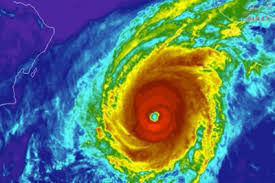
Cyclones and Anti-Cyclones
Q1. The Planetary winds which are known as “roaring forties” are
(A) Easterlies
(B) Westerlies
(C) Trade Winds
(D) Doldrums
Q2. Which of the following is not a Planetary wind?
(A) Easterlies
(B) Westerlies
(C) Bora
(D) Trade wind
Q3. Which one of the following is the pattern of circulation around a low-pressure area in the northern hemisphere?
(A) Clockwise and away from the center
(B) Anti clockwise and towards the center
(C) Clockwise and towards the center
(D) Clockwise and away from the center
Q4. When the ICTZ shifts to the north during summers, what happens to the wind belts?
(A) Shift northward
(B) Shift southward
(C) Shift eastward
(D) Shifts westward
Q5. In which season are the trade winds the strongest?
(A) Winter
(B) Spring
(C) Summer
(D) Rainy
Q6. Consider the following statements:
1. The winds which blow between 30N and 60S latitudes throughout the year are known as westerlies
2. The moist air masses that cause winter rains in North-Western region of India are part of westerlies.
Which of the statements given above is/are correct?
(A) 1 only
(B) 2 only
(C) Both 1 and 2
(D) Neither 1 nor 2
Q7. Which of the following statement is/are true for cyclones?
(A) Cyclones are centres of low pressure surrounded by closed isobars and having increasing pressure outwards.
(B) Cyclones range in shape from circulars, elliptical to ‘V’ shaped.
(C) Cyclones have an immense influence on the climate and weather.
(D) All the above are correct.
Q8. How many types of cyclones are there?
(A) 2
(B) 3
(C) 4
(D) None of the above
Q9. What causes tropical cyclone to rotate?
(A) Tension Force
(B) Gravitational Force
(C) Frictional Force
(D) Coriolis Force
Q10. What happens to the water depth as the Tsunami wave approach the coast.
(A) It increases
(B) It Decreases
(C) Increases and decreases alternately.
(D) Neither increases nor decreases.
For more information on winds, cyclones and anticyclones, read by clicking the link given below.
pressure-belts-and-wind-system
Class VII Geography Chapter 4 “Air”
7 Days Crash Course In Geography For National Defence Academy (NDA) Exam
Topic: Ocean currents, and tides
Q1. Which is the process through which water continuously changes its form?
(A) Water cycle
(B) Food cycle
(C) Rain
(D) All of these
Q2. Which one of the following has salty water?
(A) River water
(B) Pond water
(C) Rain water
(D) Lagoon water
Q3. When did Tsunami strike the Indian ocean?
(A) 26 December, 2004
(B) 26 December, 2005
(C) 26 December, 2006
(D) 26 December, 2007
Q4. The largest Tsunami wave travels at the speed of __________
(A) more than 700 km per hour
(B) more than 500 km per hour
(C) more than 250 km per hour
(D) more than 100 km per hour
Q5. The rhythmic rise and fall of ocean water twice in a day is known as
(A) tide
(B) wave
(C) ocean current
(D) none of these
Q6. The Labrador and Gulf stream are the examples of:
(A) Tides
(B) Ocean currents
(C) Tsunami
(D) Waves
Q7. What is the approximate interval between spring tide and neap tides?
(A) 7 Days
(B) 15 Days
(C) 21 Days
(D) 30 Days
Q8. Coasts of Norway are not frozen in winter whereas it’s adjoining coasts are frozen for most parts of the year. This is because of _________?
A. Kuroshio current
B. Warm North Atlantic Current
C. Warm North Pacific Current.
D. Al Nino Current
Q9.Which of the following statement (s) is/are correct about El Nino?
A. The term El Niño translates from Spanish as ‘the boy-child’
B. Peruvian fishermen originally used the term to describe the appearance, around Christmas, of a warm ocean current off the South American coast.
C. It is now the commonly accepted term to describe the warming of the central and eastern tropical Pacific Ocean.
D. All of the above
Get more questions on Ocean currents here https://www.jagranjosh.com/articles/gs-geography-quiz-for-ias-on-movements-of-ocean-water-1492513709-1
7 Days Crash Course In Geography For National Defence Academy (NDA) Exam
Conclusion on National Defence Academy (NDA)
Students (Boys & Girls) those who are in class 12 can appear in National Defence Academy (NDA). The questions asked in the National Defence Academy (NDA) are from class VI to Class XI. NATIONAL DEFENCE ACADEMY (NDA) For Class 12 Students Part I has all important questions to check your concepts. Very soon part II and part III will also be uploaded. Keep visiting.
All the best for your National Defence Academy (NDA) exams.
Hindi medium students can read and understand from the following links:
सौरमंडल में पृथ्वी Class 6- Geography Chapter
एनसीईआरटी कक्षा 7 सामाजिक विज्ञान भूगोल अध्याय 4 “वायु”
एनसीईआरटी कक्षा 7 सामाजिक विज्ञान भूगोल अध्याय 3 हमारी बदलती पृथ्वी


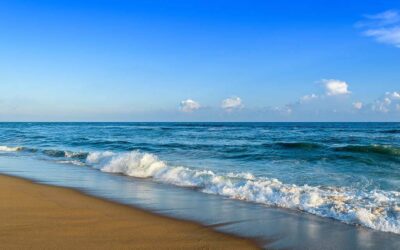

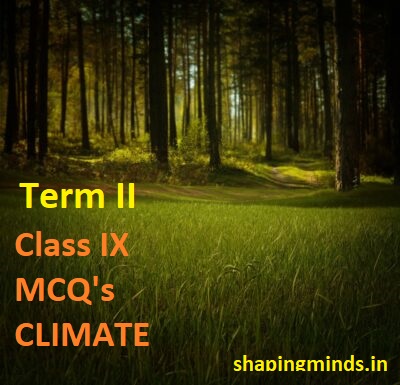
0 Comments